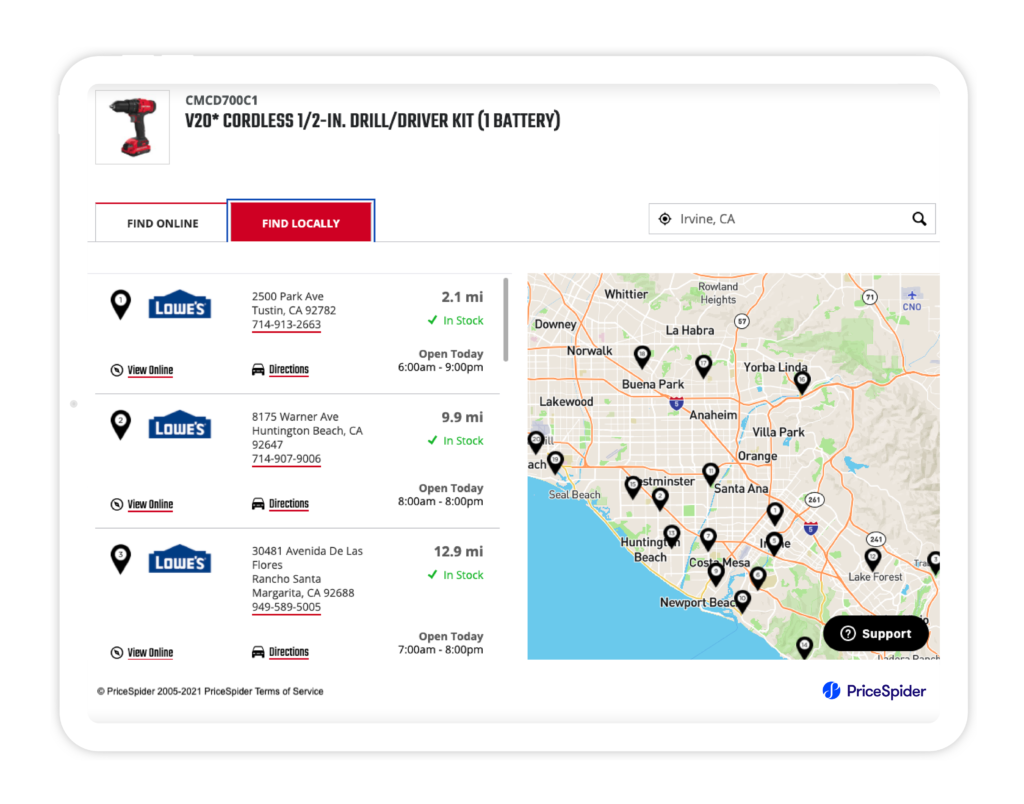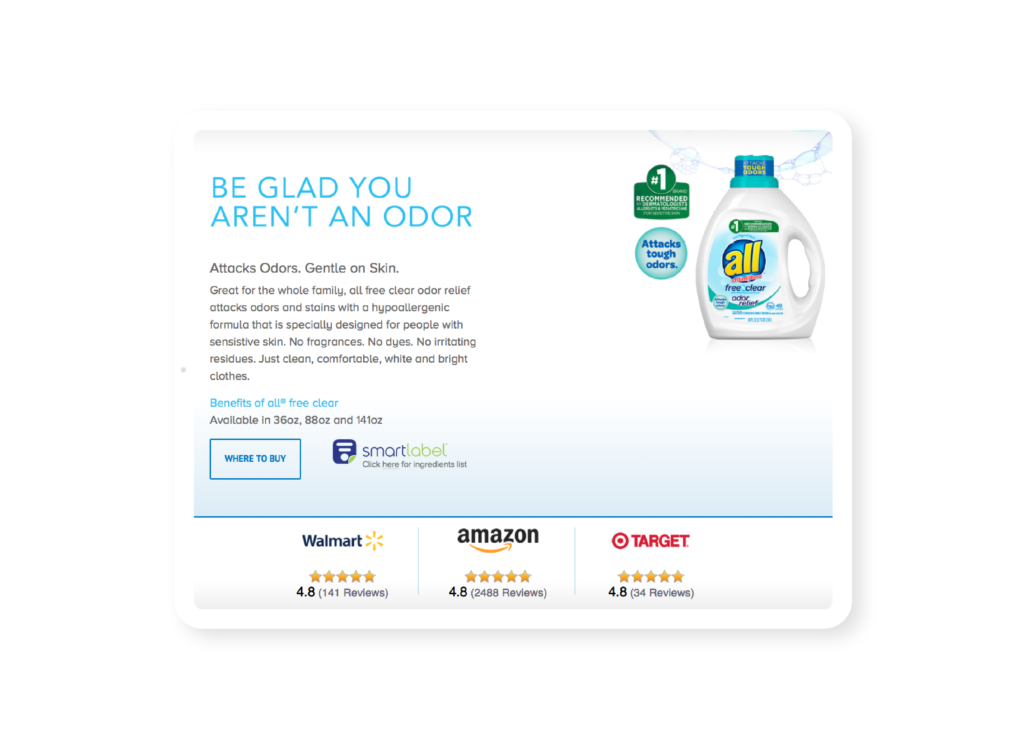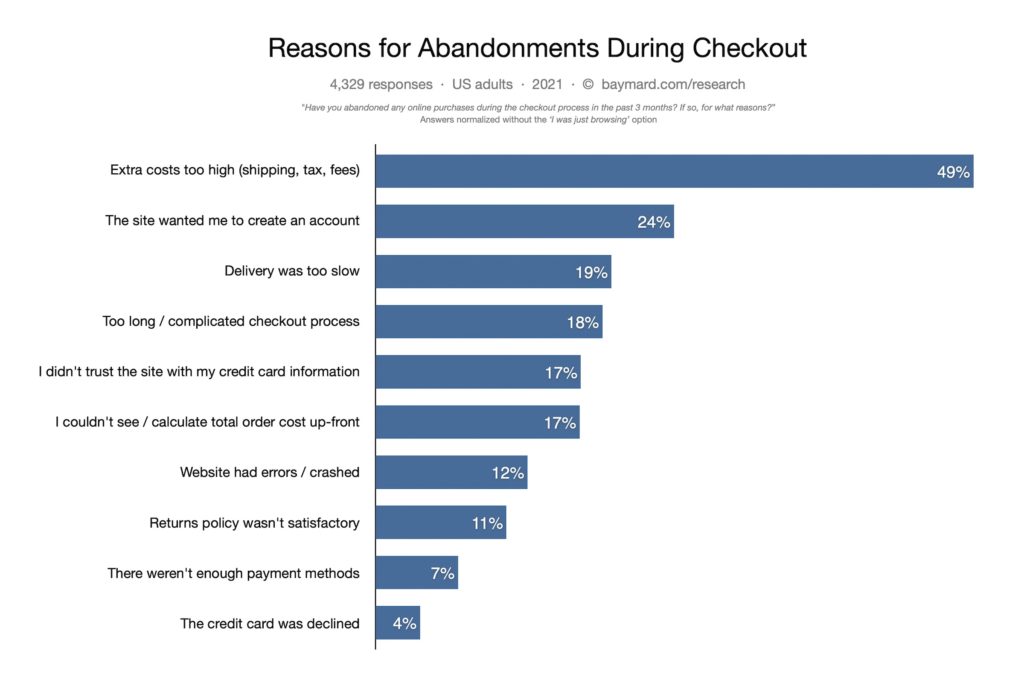You have a superpower. No, you can’t fly, turn invisible, or do whatever it is that makes Aquaman special (though you can certainly try talking to fish). One of the great human abilities is learning. We observe, evaluate, and improve. When you stop learning, you fail to improve, which is like Batman ditching his utility belt or Wonder Woman hanging up her lasso — they’re still effective, but not as powerful as they could be. And when you fail to apply your learnings to ecommerce, you fail to optimize your business.
It’s relatively simple to get started with ecommerce: you make a product and sell it online. But it becomes much more complex when you consider your whole ecommerce environment, including your marketing channels, your website, and your product pages on retailers’ websites. There’s an overwhelming number of pieces to track, analyze, and modify if you want to be competitive in your industry.
Ecommerce optimization is an ongoing process — not a one-time task. And no matter how efficient your online sales channels become, there’s always room for improvement.
Here are 20 ecommerce optimization tips ranging from general guidelines to tactical decisions.
1. Streamline the path to purchase
Many ecommerce brands optimize their website, marketing content, and product pages to drive direct-to-consumer sales. But whether you do this to ensure the best margins or because you don’t want to overwhelm your audience with choices, this common approach hurts your conversion rate and costs you sales.
Most consumers have preferred retailers they buy from all the time. They already have accounts with these stores. They have perks they want to take advantage of. And they may even have recurring orders. When consumers discover a new product, they usually try to buy through their preferred retailers first. If you don’t give them a direct link from your content to your product page on a major retailer’s website, many of your visitors will try to find their own path.
And you’ll often lose the sale along the way.
They may decide buying your product isn’t worth the effort of finding their credit card or adding billing and shipping details. (Or else they’ll decide to buy it “later,” which often means never.) If they’re willing to search for your product, there are all kinds of opportunities for your competitors to intercept them on Google or a retailer’s search engine.
Plus, they can hit dead ends. They might search for your product and learn that their preferred retailer doesn’t have it in stock.
To maximize conversions, brands need to show their customers a range of online stores that carry their products, making it easy for them to select a convenient buying option they’re already familiar with.
Note: The secret to pulling this off on product pages and other content is adding a store locator to your website.

2. Drive customers to your highest-converting channels
Some retailers work harder to drive your customers to their store brands or your competitors than others. Some simply don’t provide a high-quality customer experience. Others don’t have enough ratings and reviews on their website to establish social proof.
There are numerous reasons why some retailers have better conversion rates than others. And that’s why not every retailer is worth sending traffic to. If you want to optimize conversions and make the most of your website traffic, send visitors to the sites where they have the best chances of becoming customers.
Unfortunately, most brands don’t have good visibility into conversions that happen outside of their websites. For that, you need universal tracking.
This is one of the reasons nearly 2,000 brands rely on PriceSpider’s Where to Buy solution. With PriceSpider’s Where to Buy, you can track conversions on outside websites and prioritize placement in your store locator appropriately. All of this while making your brand shoppable across possible touchpoints both physical and digital.
3. Choose the most relevant product categories
Categorizing your products is tedious and boring. It’s also essential. Get it right, and your products show up in the places they’re supposed to when customers explore your product category. Get it wrong, and people won’t see your brand where they should, and they’ll find you in places they shouldn’t. (They won’t appreciate seeing your headphones in the “speaker” category.)
As a guideline, you should always aim to be as specific as you can. Different retailers and platforms use different product taxonomies, and it’s important to understand how your catalog fits into each one. Don’t settle for classifying your turtleneck sweaters as “apparel.” And don’t just tag your products with the first category that looks somewhat close.
4. Tell a story with your images
Depending on your product category, your product page should typically include 8–12 images. This allows you to highlight your product from all the key angles and showcase popular use cases. But if you want your images to be as effective as possible, you shouldn’t treat each one as an independent asset.
Like the sentences of a paragraph, your images should work together to tell a story about your product. They should feel cohesive, as though they were made to build on each other. Visually, this means using original photos and graphics (not stock images) that share the same themes, colors, and branding.
Your photos can and should help customers see different aspects of your product and picture it in a variety of contexts. But together, they should feel more like a storyboard than a collage.
5. Create (and enforce) a MAP policy
Keeping your prices consistent forces your sellers to compete on service and keeps sales stable over time.
Left to their own devices, third-party sellers can and will play games with your prices. They’ll drive them so low your best retail partners can’t compete. And while they’ll attract plenty of customers with their absurdly low prices, they also make it hard for consumers to tell the difference between your authentic products and cheap knock-offs.
A Minimum Advertised Pricing (MAP) policy establishes the lowest price you’ll allow a seller to display for your products. It also outlines how you’ll penalize sellers who violate these prices. By itself, the policy won’t prevent pricing games. Some sellers will violate it because they don’t care, and then everyone else has to do the same to compete. (We call this the domino effect of MAP violations.) But as you enforce your MAP policy, sellers take it more seriously — and they’ll either honor your price or you’ll terminate the relationship.
If you don’t create a pricing policy or allow sellers to violate it without consequences, your best retail partners will get frustrated. They’ll complain. And if you don’t do anything, they may stop selling your products altogether. Creating and enforcing a pricing policy is a critical part of a well-oiled ecommerce system.
6. Reinforce your brand
Especially in crowded product categories, it can be hard to stand out. That’s why you need to take every opportunity you can to highlight your brand values, work toward top-of-mind awareness, and reinforce your brand name and imagery. You want people to think of your brand anytime they think about your product category, or when the problems you solve come up in conversation.
Some of that happens on the product page itself, through product titles and descriptions that differentiate you from the competition and consistent branding across channels. But you can also reinforce your brand by creating helpful content (articles, videos, etc.) and establishing a strong online presence. The stronger your brand is, the more likely people are to visit your product pages when they see you appear in searches.
7. Measure the ROI of your marketing channels
Every marketing channel you choose to develop comes with an opportunity cost. Most brands can’t afford to dedicate a single employee to each channel. And while every channel has its uses, not everyone is worth investing in, especially if you have limited marketing resources.
The problem is that most brands can’t really tell how effective their marketing channels and campaigns are. Without universal tracking, you can’t tell when someone clicks through your ad, checks out your product page on your website, and then buys your product on Amazon.com. Those sales are directly connected to your marketing efforts, but unless you have tools like PriceSpider’s Where to Buy, you’re basing your return-on-investment calculations on a fraction of the actual data.
When you know which marketing channels are most effective at moving the needle, you can focus on the efforts that have the greatest potential.
8. Experiment with retargeting ads
Years ago, consumers weren’t sure how to feel about seeing products “follow” them around the internet after they left a website. But retargeting ads are ubiquitous now. And they can be an excellent tool for driving people back to your website.
You can show people the products they just viewed or items they had in-cart. You can highlight special offers that address their potential concerns (such as advertising a payment plan for a high-priced product). Or you can advertise add-ons and related products to existing customers.
Retargeting ads aren’t always more effective than other advertising models, but they have one key advantage: everyone you target has encountered your brand and visited your website before. And that makes them worth trying.
Note: Alternatively, you may find that reducing or eliminating spend on retargeting ads is part of optimizing your ad budget, particularly if you find that many of the purchases attributed to your retargeting campaigns would’ve happened anyway. The important part is to understand your attribution models and determine if the sales that are actually coming from retargeting justify the investment.
9. Increase your ratings and reviews (and show them off)
Consumers constantly use social proof to evaluate products and services. They want to feel confident they’ll have a good experience with their purchase, so they see what other customers have said.
The ideal number of reviews you need varies depending on your product category and the retailer or marketplace. But in general, if you have less than 50 reviews, you need more. And if your average rating is under 4.2 stars, it will negatively impact sales. And of course, you want to have more and better ratings than your competition.
Thankfully, there are plenty of actionable ways to increase your product reviews, like joining a product sampling program or incentivizing them in follow-up communications with customers.
Once you have solid ratings and reviews, you need to make sure your customers know. Consumers are more confident in third-party reviews because they’re more difficult to manipulate, so if you have stellar ratings on Lowes.com or BestBuy.com, you’ll want to include that on the product pages on your website.
Where to Buy’s Ratings & Reviews module lets you showcase third-party reviews right on your website with convenient (and fully trackable) links to your product pages on the associated retailer’s site.

10. Put your packaging materials to work
In ecommerce, there’s a lot of focus on sales. But getting someone to buy from you is just the beginning of your relationship with them. Ideally, you want them to become loyal customers and even advocates for your brand.
Packaging is an incredibly effective channel for furthering your relationship with customers. When people first open your product, they hunt through the packaging materials for things that are important. They’ll skim whatever you’ve included in there, which makes it the perfect time to capture their attention with an incentive, such as a discount for joining your loyalty program or a free add-on for leaving you a review.
You can also share resources that might help them get more out of the product they just purchased, such as tutorial videos, guides, or apps. This enables you to grow your other channels, increase customer touchpoints, and keep your customers engaged with your brand.
11. Find relevant ways to use videos
Videos aren’t inherently valuable. But in the right context, a well-planned video can educate potential customers, drive sales, and strengthen your brand. The key is to find the right approach to incorporating videos in your ecommerce strategy.
Your product page is not the place to bombard potential customers with video ads for the product they’re looking at. But a high-quality tutorial video that showcases popular use cases can be an excellent way to demonstrate the benefits you highlight in your product description and imagery. Consumers can feel more confident that your product will do the things they need it to do because they’ve seen it themselves.
You can also use videos to help customers get a fuller perspective of what your product looks like and how it works. Is your target audience concerned that your product might be difficult to assemble or install? Text-based instructions with pictures can sometimes make setup look more complex than it is. An installation video could assure people that they can handle putting it together (or that their friend or family member can).
12. Make your products more discoverable
The easier it is for people to find your products and the more places they encounter your brand, the more you’ll sell. There are three key ways you can make your products more discoverable:
- Search engine optimization
- Selling through more marketplaces and retailers
- Creating content that gets attention
There’s always room for improvement here. In ecommerce, search engine optimization is critical: you want your products to show up first in Google and on retailer’s websites when people search for your product category. Every search engine is a little different, but you need to make sure your product pages are robust and use the terms your audience uses. Things like ratings and returns can impact your rankings, too.
Selling through additional marketplaces and retailers is about being where your target market is. Retailers invest immense resources into developing a loyal customer base. If your products aren’t available through a retailer, their customers will often go with a competitor.
The third big way to make your products more discoverable is to create resources that consistently get attention. It could be a series of how-to guides that people regularly find on YouTube or Google, or a social media channel where you publish engaging content.
13. Upsell your customers
After someone buys from you, upsell messaging should be part of your automated follow-up communications. Whether it happens via email, advertising, packaging, an app, or another channel, show your customers more of your catalog. Talk about add-ons and related products that will help them get greater benefits from the item they just purchased.
If you don’t utilize opportunities to upsell customers, you’re leaving money on the table. Your customer base is a lot more likely to be receptive to your marketing than people who have never bought from you before. They’ve had more experience with your brand, and they’ve seen the benefits of your products.
The trick with upselling customers is timing. Ideally, you’d try to upsell customers after they’ve had a chance to use your product and enjoy their purchase. But some brands actually send automated upsell emails within 30 minutes of a purchase. And it works. Peak Design capitalizes on the excitement of making a purchase, reinforces the lifestyle customers have just bought into, and highlights accessories and related products that help them get more from their investment.
14. Grow an audience
It’s a lot harder to sell your products if no one sees your marketing. To an extent, you can keep ramping up your ad spend to increase sales. But growing your own audience — instead of paying for one — ensures there are always people who will listen when you have something to share. You can leverage your email list, social media accounts, and other channels whenever there’s a relevant sale or product launch.
Without an audience, your marketing efforts are like shouting into the void.
It takes time and energy to grow a loyal following, but once you have one, your promotions will see a bigger lift when you share them. Like many aspects of ecommerce marketing, building an audience is an ongoing process. Your audience can always be larger and more relevant — both of which can make your marketing more effective.
15. Send abandoned cart emails
Adding a product to cart isn’t the same as buying it. And in ecommerce, cart abandonment rates are absurdly high — well over 50%. But just because someone decided not to buy once doesn’t mean they never will. In fact, the reasons people abandon their cart often have more to do with the ecommerce experience than your product.
According to a 2021 survey by Baymard, the most common reason why people abandon their carts is because the extra costs (taxes, shipping, and fees) were too high. Most of the other leading causes are rooted in frustrations with the website itself.

You can’t always address the reasons why people abandon their cart. It may require new website infrastructure, better tools, and other improvements you simply can’t make. But you can remind people what appealed to them about your product in the first place. You could even offer a discount.
Cart abandonment emails won’t recover every sale. But according to Moosend, 10.7% of the people who receive them click through and make a purchase. And since this is something you can set up once and then automate, it’s a no-brainer. If you want to optimize your ecommerce engine, you should be doing everything you can to recover lost sales.
People who add your product to their carts are on the home stretch of the customer journey. Don’t let them all just slip away.
16. Test everything
A/B testing is a staple of optimization. If you want any asset to be the most effective it can be, you need to explore more than one version of it. In ecommerce, there’s no shortage of things to test. The challenge is simply figuring out what you can measure, and making sure you measure it right.
In ecommerce optimization, you should aim to test things like:
- Product page titles, images, descriptions, and sections
- Which retailers you highlight in your where-to-buy solution
- Email subject lines
- Ad copy and images
- Displaying ratings and reviews from retailers on your own website
- Personalization
Any time you have to decide which asset to use, which messaging to lead with, or where to send traffic to, you should create an environment where your best ideas and theories can compete against each other.
Over time, testing and validating (or ruling out) ideas will give you better immediate results and better insight into what kinds of assets, messaging, and pathways your target audience is most receptive to.
17. Be concise where it counts
As people skim search results and bounce around product pages, you don’t have much time to capture their attention. They’re not going to read a paragraph-long title or a product description that sounds like a technical manual. You need to be concise. That means making tough choices about what to include in your most prominent positions and what to bump further down the page.
Every key feature, capability, use case, quality, and product detail deserves a place on your page, but only a handful belong in your title and description. Through a combination of customer surveys and A/B testing, you should land on the three to five most important words and phrases to emphasize.
An optimized product page should be comprehensive and rich with detail, but concise where it counts.
18. Win the digital shelf
The digital shelf encompasses the entire online shopping experience, including the places people research your category, search engine results, product pages, and the checkout process.
On the physical shelf, you can’t control what consumers see beside your products, but you can do things to influence how well your product stands out. The same is true of the digital shelf. And the better job you do at winning the digital shelf, the larger your share of sales will be in your space.
Brands that invest in search engine optimization and build relationships with influencers increase the likelihood that consumers will encounter their brand first when exploring the industry or product category. It also allows them to shape how people think about the product category, even influencing what features, capabilities, and qualities consumers value the most.
Creating comparison pages — or space to do a comparison on your product pages — gives you greater control over how people think of you in relation to your competitors.
It’s also crucial that you create high-quality customer experiences at every touchpoint. Every step of the way, you want consumers to trust you and believe that you’re the best in the category. Your customer support needs to be responsive and helpful. Your return policy should be generous and simple. The checkout process should be convenient and reliable. And wherever people encounter your brand, they should have consistent experiences.
These individual touchpoints contribute to how potential customers see your brand as they explore the digital shelf and consider their options. If you want to maximize sales, you need to create a cohesive, compelling experience that puts you above the competition.
19. Leverage customer perks
Major retailers typically have far more resources to invest in the shopping experience and build the infrastructure they need to provide customer perks. Most brands simply can’t facilitate free two-day shipping, curbside pickup, BOPIS, and other perks consumers crave. But you can leverage these perks by pointing your customers to retailers who offer them.
As you saw in Baymard’s research into cart abandonment rates, the most common reasons online shoppers choose not to purchase all relate to the experience they have with the store, not your product itself. If you can incorporate convenient and appealing perks into your marketing, it could lead more people to feel confident they will have a good experience. And by driving traffic to the stores that offer the best perks, you increase the likelihood that they will.
Consumers already enter the shopping experience with particular retailers in mind because of the perks and qualities that matter most to them. Use that to your advantage. Highlight your relationship with the most sought-after retailers, and create a clear path from your website to your product pages on their site where your customers can get those perks.
20. Understand your customer journey
There’s only so much you can do to optimize your ecommerce experience if you don’t understand how consumers become your customers. The customer journey is a complex process involving several stages. It’s not simply a series of touchpoints — an ad to a product page to a sale. It’s a journey from being unaware of your brand to becoming an advocate for it.
The customer journey looks a little different for every person, but they share general qualities: things they need to learn, problems they want to solve, goals they want to reach, and questions they hope to answer.
The better you understand the progression your customers have to work through and the things they need to accomplish at each stage, the more effectively you can use your digital touchpoints to drive conversions.
Want to understand your customer journey better? Start with an exercise: create a customer journey map.

